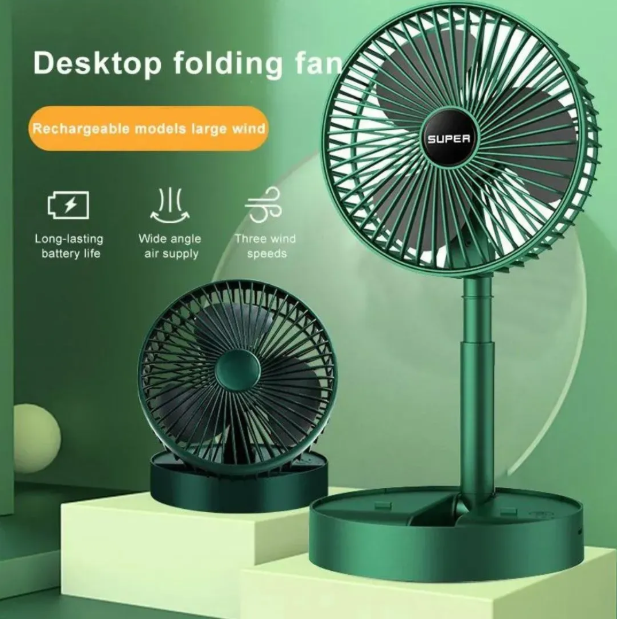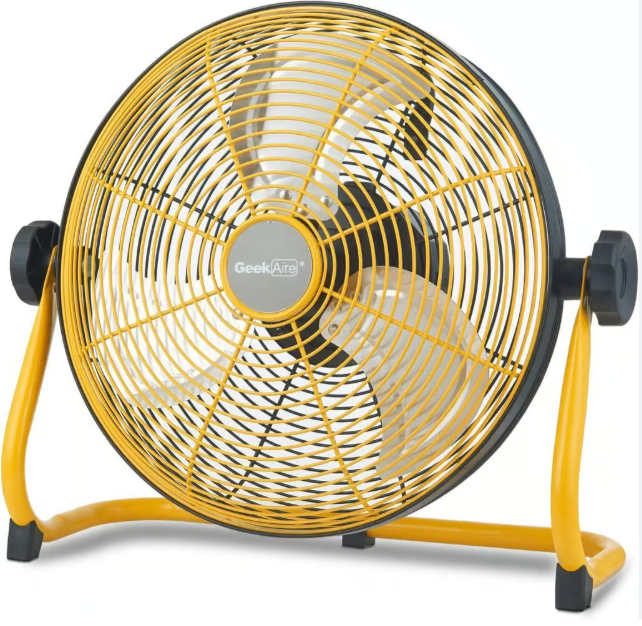With summer heat on the rise, selecting the right electric fan can make all the difference in keeping your home or workspace cool and comfortable. This electric fan buying guide provides a comprehensive roadmap to choosing the best electric fan for your needs in 2025. From understanding electric fan setup to mastering electric fan maintenance, we’ll cover key factors like fan types, features, and performance metrics. Whether you’re looking for a portable electric fan or a high-powered tower model, this guide offers practical electric fan tips to help you make an informed decision.
Why Invest in an Electric Fan?
Electric fans are an energy-efficient, cost-effective alternative to air conditioners, typically using 10-150 watts and costing just pennies per hour to operate. They’re versatile, available in various styles to suit different spaces, and easy to set up and maintain. Fans circulate air to create a refreshing breeze, making hot days more bearable without spiking your energy bill. This electric fan buying guide will help you navigate the options to find a fan that balances performance, efficiency, and style.
Types of Electric Fans
Before diving into specific models, it’s important to understand the main types of electric fans available in 2025:
- Desk/Table Fans: Compact and ideal for personal cooling on desks or nightstands, perfect as a portable electric fan for small spaces.
- Tower Fans: Slim and stylish, these deliver whole-room cooling with oscillation, great for living rooms or bedrooms.
- Pedestal Fans: Adjustable in height, these offer powerful airflow for medium to large rooms, often with oscillation.
- Floor Fans: High-velocity models designed for large spaces like garages or workshops, prioritizing strong airflow.
- Bladeless Fans: Sleek and safe, these are ideal for families and often include air-purifying features.
- Wall-Mounted Fans: Space-saving and powerful, perfect for fixed installations in gyms or small offices.
Each type serves specific needs, so consider your room size, portability requirements, and aesthetic preferences when choosing.
Key Factors to Consider in an Electric Fan Buying Guide
When selecting the best electric fan, evaluate these critical factors to ensure you get the right model:
- Airflow (CFM): Measured in cubic feet per minute, higher CFM (1000-5000+) indicates stronger airflow, ideal for larger spaces.
- Room Size: Match the fan’s airflow to your room size. Desk fans suit small spaces (under 100 sq ft), while tower or floor fans work for larger areas (200-400 sq ft).
- Noise Levels: Look for fans with noise levels below 40 dB for bedrooms or offices; high-velocity fans may reach 50-60 dB.
- Energy Efficiency: DC motors (20-50 watts) are more efficient than AC motors (50-150 watts), saving on energy costs.
- Features: Oscillation (70-180 degrees), multiple speed settings (3-12), timers (1-24 hours), and remote or smart controls enhance usability.
- Portability: Lightweight designs (under 10 pounds) or handles make moving the fan easier, especially for portable electric fans.
- Build Quality: Durable materials like metal blades or sturdy plastic ensure longevity, especially for high-use environments.
For more insights on choosing fans, explore our detailed cooling guide.
Electric Fan Setup: Getting Started
Proper electric fan setup ensures optimal performance and safety. Follow these steps:
- Unpack and Inspect: Check for all components, such as the base, blades, remote, or mounting hardware, ensuring no damage.
- Assemble Securely: Attach the base, mount, or other parts as per the manual, using screws or clips for stability.
- Position Strategically: Place on a flat, stable surface or mount securely. Position opposite a wall or near a window to enhance airflow.
- Plug In and Test: Connect to power and test all speeds, oscillation, timers, or smart features to confirm functionality.
Strategic placement, like angling the fan at 90 degrees or using oscillation, maximizes cooling. Ensure stability to prevent tipping, especially in homes with children or pets.

How to Use an Electric Fan Effectively
Maximizing your fan’s cooling potential is easy with these electric fan tips:
- Use Oscillation or Tilt: Enable oscillation (70-180 degrees) or adjust the fan’s angle to distribute air evenly.
- Create a Cross-Breeze: Place near a window to pull in cooler air or use a bowl of ice water for a chilled effect.
- Adjust Speeds: Use lower speeds for quiet operation in small spaces and higher speeds for quick cooling in larger areas.
- Leverage Timers: Set timers (1-12 hours) to save energy, especially for nighttime use.
Pairing your fan with an air conditioner can circulate cool air, allowing you to raise the AC temperature and reduce energy costs.
Electric Fan Maintenance: Ensuring Longevity
Regular electric fan maintenance keeps your fan running efficiently. Follow these steps:
- Clean Regularly: Dust on blades or grilles reduces airflow. See our electric fan cleaning guide below.
- Inspect Power Sources: Check cords, plugs, or batteries for wear. Replace damaged parts immediately.
- Tighten Components: Secure loose screws or parts to prevent vibration or wobbling.
- Store Properly: Store in a dry, dust-free area when not in use to protect components.
Consistent maintenance extends your fan’s lifespan and ensures safety.
How to Clean an Electric Fan
Electric fan cleaning is essential for performance and air quality. Here’s how to clean your fan:
- Disconnect Power: Unplug the fan or remove batteries to ensure electric fan safety.
- Remove Grilles or Covers: Detach grilles, filters, or covers as per the manual, typically by unscrewing or unclipping.
- Clean Blades: Vacuum dust or wipe blades with a dry cloth. Use a damp cloth with mild soap for stubborn dirt, avoiding electronics.
- Wash Grilles/Filters: Soak removable grilles in warm, soapy water, scrub gently, and dry thoroughly. Replace or clean filters as needed.
- Reassemble and Test: Reassemble and test all functions to confirm proper operation.
Clean every 2-4 weeks during heavy use to maintain airflow and prevent dust circulation.
Electric Fan Troubleshooting: Fixing Common Issues
Even the best electric fan may face problems. Here’s a guide to electric fan troubleshooting:
- Fan Won’t Start: Check the power cord, plug, or battery charge. Test the outlet with another device.
- Weak Airflow: Dust buildup can reduce performance. Clean blades, grilles, or filters thoroughly.
- Noisy Operation: Loose parts or debris may cause rattling. Tighten screws or remove obstructions.
- No Oscillation: The oscillation mechanism may need lubrication or repair. Refer to the manual.
If issues persist, contact the manufacturer or a technician.
Electric Fan Safety: Staying Safe
Electric fan safety is crucial to prevent accidents. Follow these guidelines:
- Avoid Water: Keep fans away from water or damp areas to prevent electrical hazards.
- Child and Pet Safety: Choose bladeless fans or tight grilles to protect fingers or paws.
- Limit Overnight Use: Use timers to avoid running the fan all night, reducing overheating risks.
- Inspect Regularly: Check cords, plugs, or batteries for wear before use.
These precautions ensure safe operation of your electric fan.

Top Features to Look for in an Electric Fan
When choosing the best electric fan, prioritize these features for optimal performance:
- Airflow (CFM): 1000-5000+ CFM for effective cooling; higher for larger spaces.
- Speed Settings: 3-12 speeds for customizable airflow.
- Oscillation/Tilt: 70-180 degrees oscillation or adjustable tilt for broad coverage.
- Noise Levels: Below 40 dB for quiet settings; up to 60 dB for high-velocity models.
- Energy Efficiency: DC motors for lower power consumption (20-50 watts).
- Additional Features: Remote controls, timers, or smart connectivity (app/voice control) for convenience.
Features like air purifiers or heaters add versatility, especially for year-round use.
Best Electric Fan Guide: Top Recommendations for 2025
This best electric fan guide highlights top-performing models across categories, based on airflow, features, and value:
- Vornado 660 Large Air Circulator (Desk/Floor): This compact fan (15 x 13.5 x 11.8 inches, 7.3 pounds) delivers 397-5100 CFM with four speeds. Its vortex design circulates air up to 100 feet, using 43-53 watts. Quiet at 30-50 dB, it’s ideal for medium rooms but lacks a remote. Best for: Versatile, powerful cooling for small to medium spaces.
- Dreo Nomad One Tower Fan (Tower): This 36-inch tower (12 x 12 x 36 inches, 8.6 pounds) offers up to 25 ft/s airflow (1600 CFM) with four speeds and 90-degree oscillation. Ultra-quiet (28 dB on low) with a remote and sleep mode, it’s perfect for bedrooms. Cleaning internal blades is slightly tricky. Best for: Quiet, stylish home cooling.
- Shark FlexBreeze Pro Mist (Pedestal/Portable): This versatile fan (13.8 x 13.8 x 37 inches, 12.2 pounds) converts from pedestal to tabletop, delivering 1200-1800 CFM with five speeds. Its misting feature and battery-powered option make it great for indoor/outdoor use, though it’s heavier at 40-50 dB. Best for: Flexible, portable cooling.
- Lasko 20-Inch Wind Machine (Floor): This high-velocity fan (23.4 x 7.3 x 25.4 inches, 9.3 pounds) provides 4750 CFM with three speeds. Durable and portable with a carry handle, it’s ideal for garages but louder (50-65 dB) and lacks oscillation. Best for: Budget-friendly, high-powered cooling.
- Dyson Purifier Cool Gen1 TP10 (Bladeless): This 41-inch bladeless fan (8 x 8 x 41 inches, 10.8 pounds) delivers 1000-1500 CFM with 10 speeds and a HEPA filter. Quiet at 30 dB with smart controls, it’s pricey but safe and versatile. Best for: Families needing air purification.
These models excel in performance, efficiency, and durability, making them top choices in our electric fan buying guide.
Conclusion: Find the Perfect Electric Fan for Your Needs
This electric fan buying guide has outlined the key factors to consider when choosing the best electric fan for 2025. By understanding fan types, prioritizing features like airflow and energy efficiency, and mastering electric fan setup, electric fan cleaning, and electric fan troubleshooting, you can ensure optimal cooling. Prioritize electric fan safety and electric fan maintenance to keep your fan in top shape. Whether you need a portable electric fan like the Vornado 660 or a premium Dyson TP10, these recommendations will keep you cool and comfortable all year round.